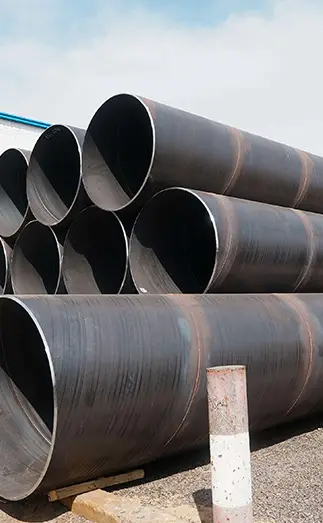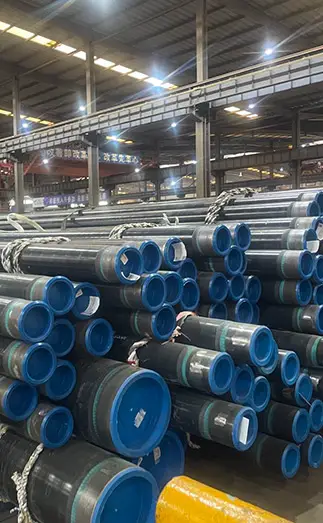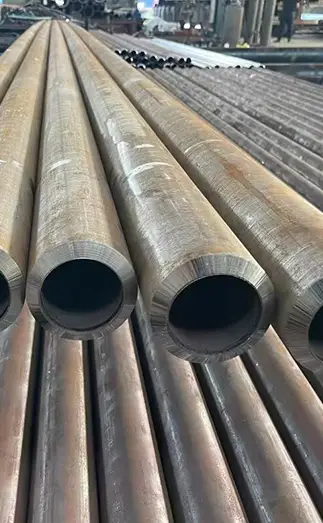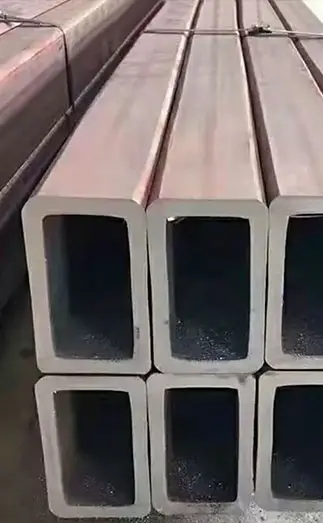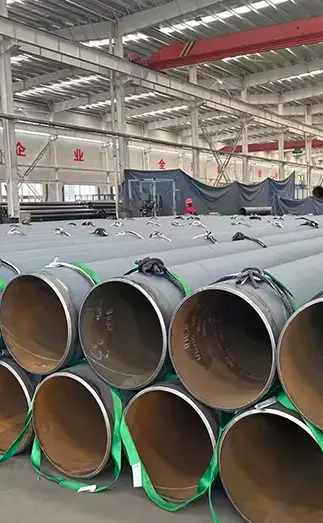In automobiles, there is a material that may go unnoticed, but it plays a vital role—like the car’s “blood vessels” and “skeleton,” supporting the powertrain and ensuring overall safety. That material is seamless steel pipe. From the engine to the exhaust system, from the chassis to the drive shaft, seamless steel pipes are used in nearly every critical area of a vehicle. Unlike welded pipes (such as ERW pipes), seamless steel pipes do not contain weld seams, eliminating potential weak points.
What Is a Seamless Steel Pipe?
As the name implies, a seamless steel pipe is a steel tube without any weld seam. It is typically produced by piercing a solid steel billet and then hot-rolling or cold-drawing it. The absence of weld seams means the pipe is made from a single, continuous piece of metal, resulting in higher strength, better reliability, and improved durability compared to welded pipes.
In the automotive sector, stainless steel seamless pipes are mainly used in the exhaust system—consuming more than half of all stainless steel used in vehicles, with about 80% being ferritic stainless steel. Components such as exhaust manifolds, front pipes, hoses, converters, center pipes, and mufflers all rely on high-temperature, corrosion-resistant seamless tubing.
Advantages of Seamless Steel Pipes in Automobiles
1. High Strength and Enhanced Safety
Without weld seams, seamless steel pipes have uniform strength in all directions. When used in A-pillars, B-pillars, anti-collision beams, and chassis reinforcements, they absorb and distribute impact energy more effectively, reducing the risk of breakage and improving passenger safety during collisions.
2. Excellent Pressure Resistance
Certain automotive systems operate under extremely high pressure:
Fuel Injection (Common Rail Systems): Diesel engines can exceed 2000 bar. Seamless pipes withstand these high-pressure pulses without deformation.
Brake Lines: High-strength seamless tubing prevents leaks or bursts, directly safeguarding braking performance.
3. Superior Fatigue Resistance
Vehicles operate under constant vibration. The uniform metallurgical structure of seamless steel pipes ensures strong fatigue resistance, extending service life and improving reliability.
4. High Dimensional Precision
Cold-drawn seamless tubes have consistent diameter, wall thickness, and a smooth inner surface—ideal for precision components:
Hydroformed structural parts
Bearing sleeves
Piston pins
Uniform dimensions reduce wear, noise, and deformation during assembly and operation.
5. Easy Processing & Lightweight Design
Seamless steel tubes can be bent, shaped, and hydroformed into complex structures. This enables:
Improved space utilization within the chassis
Reduced weight
Enhanced fuel efficiency
Maintained or increased structural strength
Typical Automotive Applications of Seamless Steel Pipes
Exhaust System
Front pipe, hose, converter shell, center pipe, muffler.
Chassis & Suspension
Axle sleeves, cantilever tubes, brake pedal tubes, bearing sleeves.
Cooling & Air Conditioning
Coolant pipes, AC pipes, temperature sensor tubes.
Transmission System
Hollow drive shafts, half-shaft sleeves, drive axle housings.
Seats & Interior Structure
Seat frame tubes and support components.
Safety Protection
Side door impact bars, crash beams, rollover reinforcement parts.
High-Strength Fasteners
Bolts, connectors, and precision sleeves made from seamless tubing.
Conclusion
Though often overlooked, seamless steel tubing is essential to modern automotive engineering. With its superior strength, uniformity, pressure resistance, fatigue performance, and processing flexibility, it serves as the “steel backbone” of the vehicle—ensuring performance, safety, and longevity.
FAQ: Seamless Steel Pipes in Automotive Applications
Q1: Why are seamless steel pipes preferred over welded pipes in cars?
Seamless pipes have no weld seams, eliminating the weak points typically found in welded pipes. This improves strength, pressure resistance, and long-term durability—especially important in fuel systems, braking systems, and exhaust components.
Q2: Are seamless steel pipes more expensive than welded pipes?
Yes, seamless pipes usually cost more due to the complex manufacturing process. However, their performance benefits—higher safety, longer service life, and lower failure rates—often make them more cost-effective for critical automotive parts.
Q3: What types of stainless steel are used for automotive exhaust seamless pipes?
Most exhaust system seamless pipes use ferritic stainless steel (about 80%), known for its excellent heat resistance, corrosion resistance, and cost efficiency.
Q4: Can seamless steel pipes help reduce vehicle weight?
Yes. Seamless pipes allow for high-strength hollow structures, enabling lightweight design without compromising safety. Hydroformed seamless components are widely used in modern lightweight vehicle platforms.
Q5: Do seamless pipes improve fuel efficiency?
Indirectly, yes. Lighter structural components and more efficient high-pressure fuel systems—enabled by seamless tubing—both contribute to better fuel efficiency.
Q6: Which automotive part uses the most seamless steel pipes?
The exhaust system uses the largest volume of seamless steel pipes due to high temperature and corrosion demands.



 English
English Español
Español Français
Français بالعربية
بالعربية